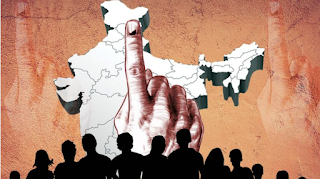Thursday, December 30, 2021
Diversity, Inclusion, Equity - a long way to go
The Ashwamedh
It would not be an exaggeration to say that Mr. Modi has proven himself to be the only bold, decisive and popular leader after late Mrs. Gandhi in the history of post-independence era in India. The recently concluded UP extravaganza was a perfect example to analyse the well-woven strategy that Mr. Modi and his team follow to continue oiling their election-winning juggernaut. The juxtaposition of highways and airports against temples and corridors ensures that they direct the eyes of the masses (at least the ones that matter to them), to see what they want them to see. The hardliners would rejoice the latter part, whereas the softer silent majority will be happy about the former. The team always has a contingency plan to mitigate failures, like in the case of the repealing of the farms laws. But for every step that they take back, they move forward by a few steps on some other front, thus choosing their battles. The team has constituted a perfect equation to ensure majority votes to retain power.
Unfortunately, there is none who can challenge the Ashwamedh of Modi Sarkar. The grand old party is too lazy to rise to the occasion courtesy the privilege they have enjoyed for decades, and thus is facing an existential crisis. The regional parties are no match to the might of BJP. SP and BSP have already exhausted the long rope given to them alternately. Communists are all but over. Shiv Sena has allied with their ideological rivals and committed a political suicide. NCP is largely living the credit of their old horse, Mr. Pawar. The only exceptions to the rule are TMC and AAP, but both are equally autocratic with a supreme leader helming their respective campaigns. Even if they manage to defeat the Goliath, the Goliath will be replaced by himself. The Muslims, the majority among minorities, who have tried and tested all of these and realised that they have just been used as vote banks, have now turned to another pole through the likes of MIM. All of this culminates into absolute power consolidation with one person and his close loyalists. And if we have an iota of trust in our history, this scenario is dangerous.
The Indian political landscape has shifted over the last two decades. But if one has to predict the future, it seems like we will experience a loop, a deja vu. We chose a supreme, autocratic leader with a strong persona leading the nation with an absolute majority and hurling it into the state of an emergency in 1975 just for the love of power. The story is repeating itself, and in all probabilities, the outcome is likely to be the same too. The Janta Dal formed as an outcome of emergency was the start of the end of Congress dominance. In my opinion, Modi-led BJP shall meet the same fate as Indira-led INC. With strong public figures like Yogi and Gadkari, the party will break into factions as soon as Modi leaves the race. And then, hopefully, we will have a government and an opposition. To avoid this, BJP would need a succession plan. And considering the smooth implementation of their strategy so far, it would not be a surprise if they effectively come up with one and transition to the next Modi. It will be like the character played by Ben Kingsley in Marvel movies, a new face backed by a core team of ideologists.
As for us, we will keep choosing the less worse in each iteration. There is no reason to blame anyone or to try to find hope. It is a safe statement to say that people get what they deserve.


